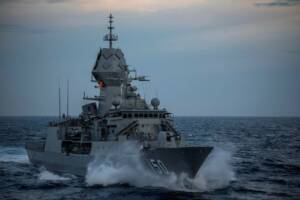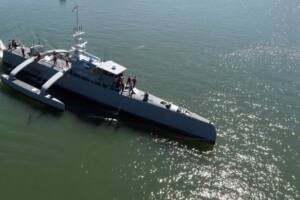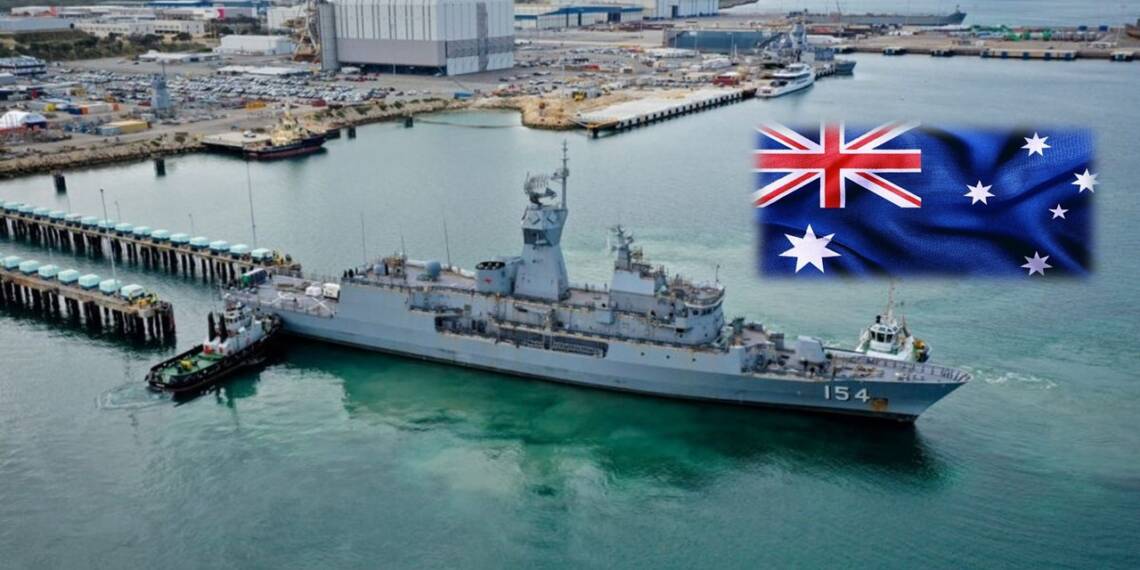The Australian navy is set to receive a substantial $11 billion boost over the next ten years, aiming to augment its fleet of warships from 11 to 26 vessels. Australia’s strategic overhaul is geared towards enhancing the defense force’s readiness for potential conflicts in the Indo-Pacific region. The plan involves acquiring up to 11 new general-purpose frigates, intended to replace the aging Anzac-class ships. Additionally, a new fleet of unmanned vessels, capable of operating autonomously without sailors on board, is in the pipeline.
However, in the short term, there will be a 25% reduction in the navy’s current frigate fleet, prompting questions about Australia’s immediate role in potential maritime conflicts. The government has decided to abandon the previously planned life-of-type extension for the Anzac-class fleet, leading to the imminent decommissioning of the oldest among the current eight frigates.
Join us on Telegram: https://t.me/tfiglobal
The commissioned HMAS Anzac, in service since 1998, is set for permanent retirement, and its spare parts are slated for sale to generate funds. The second-oldest frigate, HMAS Arunta, is scheduled for decommissioning in 2026, predating the introduction of the new frigates into service.

While affirming a commitment to sustained shipbuilding in South Australia and Western Australia, the government plans to procure some vessels “off-the-shelf” from overseas to expedite the delivery of new warships. The originally planned fleet of Hunter-class frigates has been reduced from nine to six, and the Arafura offshore patrol vessel program has been halved from 12 to six vessels following a review led by retired US Vice Admiral William Hilarides.
The reduction in the offshore patrol vessel program impacts German shipbuilder Luerssen and the German government, following the Australian government’s decision to award a significant army vehicle contract to a South Korean firm over a German contractor last year.
Read More: Naval Clash: Australia’s Gamble with Germany Unveiled
The Albanese government emphasizes a substantial increase in the navy’s firepower, with the total missile cells on the nation’s warships set to rise from approximately 430 under the previous government to around 700 under the new plan.
In the near future, the aging Harpoon anti-ship missiles on the navy’s existing air warfare destroyers and frigates will be replaced with upgraded naval strike missiles and long-range Tomahawk cruise missiles. To address concerns about the firepower of the 10,000-tonne Hunter-class frigates, lacking missile cells despite their substantial size, a feasibility study will determine the fitting of Tomahawk cruise missiles.
The first vessel from the nation’s fleet of eight Anzac-class ships, HMAS Anzac, is set for immediate retirement under the proposed plan. Defence Minister Richard Marles emphasizes that this restructuring will result in the largest surface fleet for the navy since World War II. He underscores the government’s commitment by stating that adequate funding has been allocated in the budget for the acquisition of new warships. “This is real money which has been worked through the Expenditure Review Committee,” he said. “There’s no make believe in this.”
Navy Chief Mark Hammond has described the release of the plan as a momentous occasion, representing the most substantial Australian investment in surface ships in several generations.
“For the men and women of the Royal Australian Navy, this is a real shot in the arm in terms of the understanding of the important role that Australian Navy sailors play across the Indo-Pacific,” Hammond said.
“This will be the largest surface combatant force we’ve operated in generations. “It will also be, in time, the most lethal.”
In response to criticisms about the government’s purported lack of short-term defense spending, an additional $1.7 billion will be invested in the navy and naval shipbuilding over the next four years, with a more extensive commitment of $11.1 billion over the subsequent decade.
The government’s overarching objective is to expand the nation’s warship fleet from 11 to 26 vessels by the late 2040s. The comprehensive plan encompasses:
- Three upgraded Hobart-class destroyers
- Six Hunter-class frigates
- Seven to 11 general-purpose frigates
- Six large optionally crewed surface vessels capable of unmanned operation

The prospect of introducing a new fleet of general-purpose frigates has triggered a global competition for the lucrative contract. A review highlighted ship designs from German, Japanese, Spanish, and South Korean firms as the top contenders for Australia’s navy. A decision on the selected design is anticipated next year, and the initial frigate is scheduled for delivery by the decade’s end.
Read More: The Shocking Twist in Transatlantic Affairs: Germany Rises as U.S. Steps Back
Opposition defense spokesman Andrew Hastie criticized the plan, deeming it “very conceptual.” He expressed concerns about the modest short-term funding increase, asserting that the timeline for enhancing the navy’s firepower was protracted. “The government can’t keep getting up and saying that Australia is facing the most dangerous strategic circumstances since the end of the Second World War and do nothing about it,” Hastie said. “I think that the Iranian-backed Houthis probably have a better strike capability than the Australian Defence Force.”
The initial trio of frigates will be procured internationally, while the remaining vessels will be constructed at the Henderson shipyard in Western Australia. Addressing recommendations from the review, the government aims to secure six “optionally crewed surface vessels” through a collaboration with the US Navy, further underscoring the comprehensive approach to modernizing Australia’s naval capabilities.
The introduction of ships capable of operating without sailors addresses a critical workforce shortage faced by the navy, particularly in adequate staffing its smaller fleet of warships.
Hence, Australia’s $11 billion naval investment signifies a strategic leap toward modernization, expanding the fleet to 26 vessels. Despite short-term adjustments, the comprehensive plan reflects a steadfast commitment to fortify naval capabilities in the face of evolving geopolitical challenges, ensuring a formidable defense force for the nation’s future.








